
Zero separation. Together for better care! Keep preterm and sick babies close to their parents
GLANCE developed a campaign called ‘Zero Separation’ to support parents of hospitalised newborns and healthcare professionals in neonatal care units with the aim to enable infant and family-centred developmental care, allowing parents to be with their child 24/7. In the beginning, the campaign first focused on COVID-19 restrictions with separation policies affecting hospitalized newborns and their families, and a global survey conducted on this topic.
Last year, the campaign concentrates on Kangaroo Mother Care (KMC), a neonatal care practice freshly addressed and highly recommended by the WHO for the care of all preterm (<37 week’s gestation) or low-birth-weight (LBW, <2,5 kg) infants. Kangaroo Mother Care is the care of preterm or LBW infants in continuous and prolonged (8–24 hours per day, for as many hours as possible) skin-to-skin contact recommended to be initiated immediately after birth, with support for exclusive breastfeeding or breast milk feeding.¹
This year, our Zero Separation campaign includes additional information on the design of the NICU (neonatal intensive care unit), how it can support infant- and family-centred developmental care with a Zero Separation approach and how to help parents cope in the NICU.
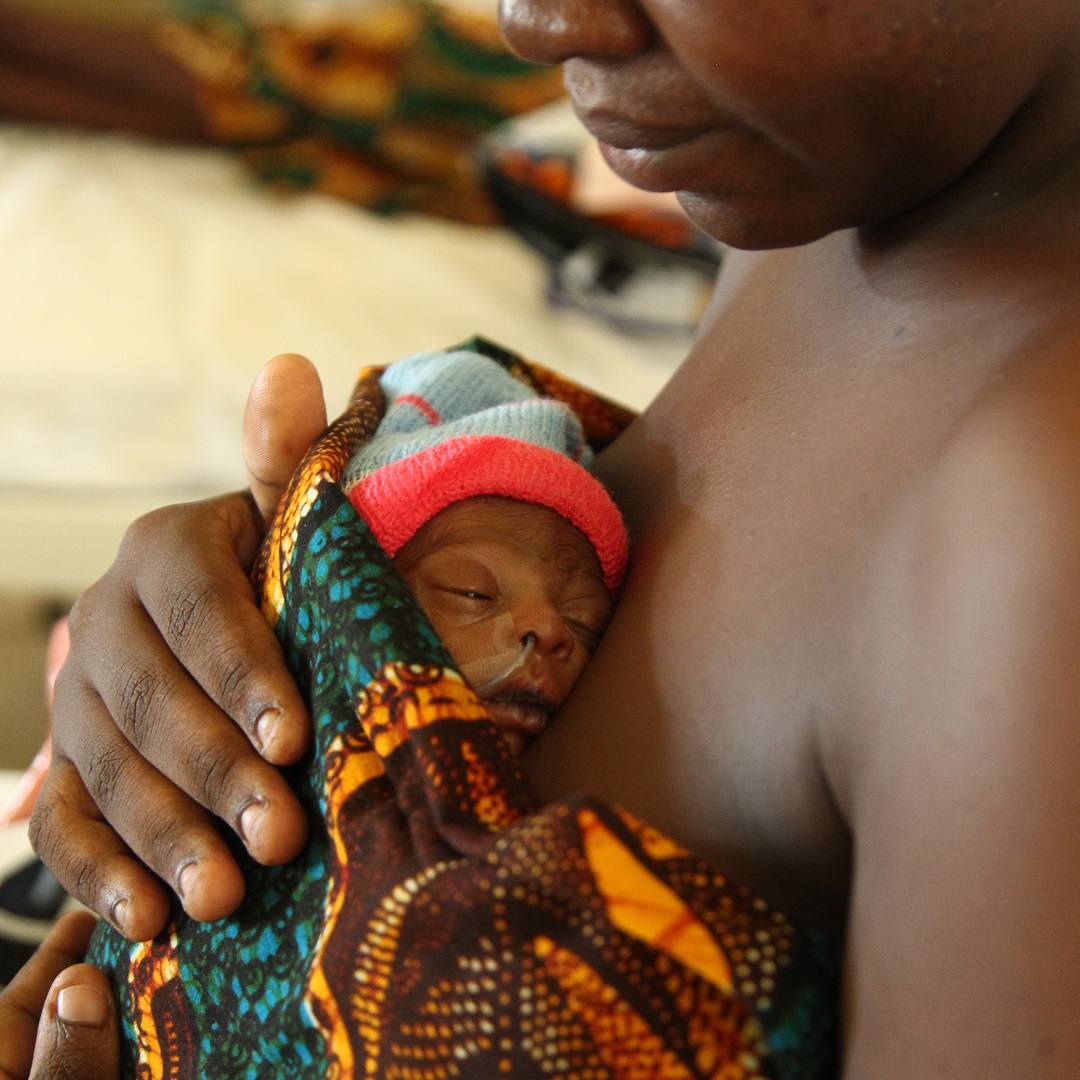
Kangaroo Mother Care
Kangaroo Mother Care, short KMC, is a neonatal care practice which benefits all newborns but particularly those born preterm, with low birth-weight, or in need of immediate medical attention.
The WHO defines the practice as including the following key features5:
Skin-to-skin contact usually occurs before breastfeeding is initiated and is an effective way to encourage mother and infant to attempt breastfeeding and, once started successfully, to continue doing it. Formula milk should only be provided in exceptional circumstances.
Studies have shown that Kangaroo Mother Care (KMC) has measurable and significant health benefits for infants, parents, hospitals and healthcare systems.1,2,3,4,5
Benefits for hospitalised newborns:
Benefits for families:
NICU Design and its influence on Zero Separation
The design of the neonatal intensive care unit (NICU) is a very important part of Newborn Health. By utilising key design elements, neonatal care can be optimised and promote the family as primary care givers throughout the stay.
A carefully planned NICU design and architecture enables
The right architectural choices empower parents to be present in the NICU and to be actively involved in the care of their baby from the start. They encourage early bonding and lots of skin-to-skin contact, improving outcomes for those born preterm and their families.
To achieve the best design for optimal care, it is recommended to involve everyone in the planning process of a neonatal intensive care unit, including staff, parents, hospital administration, and NICU planners. Different opinions may exist between these groups, but it is important to consider all perspectives.
For more information, have a look at our European Standards of Care for Newborn Health:
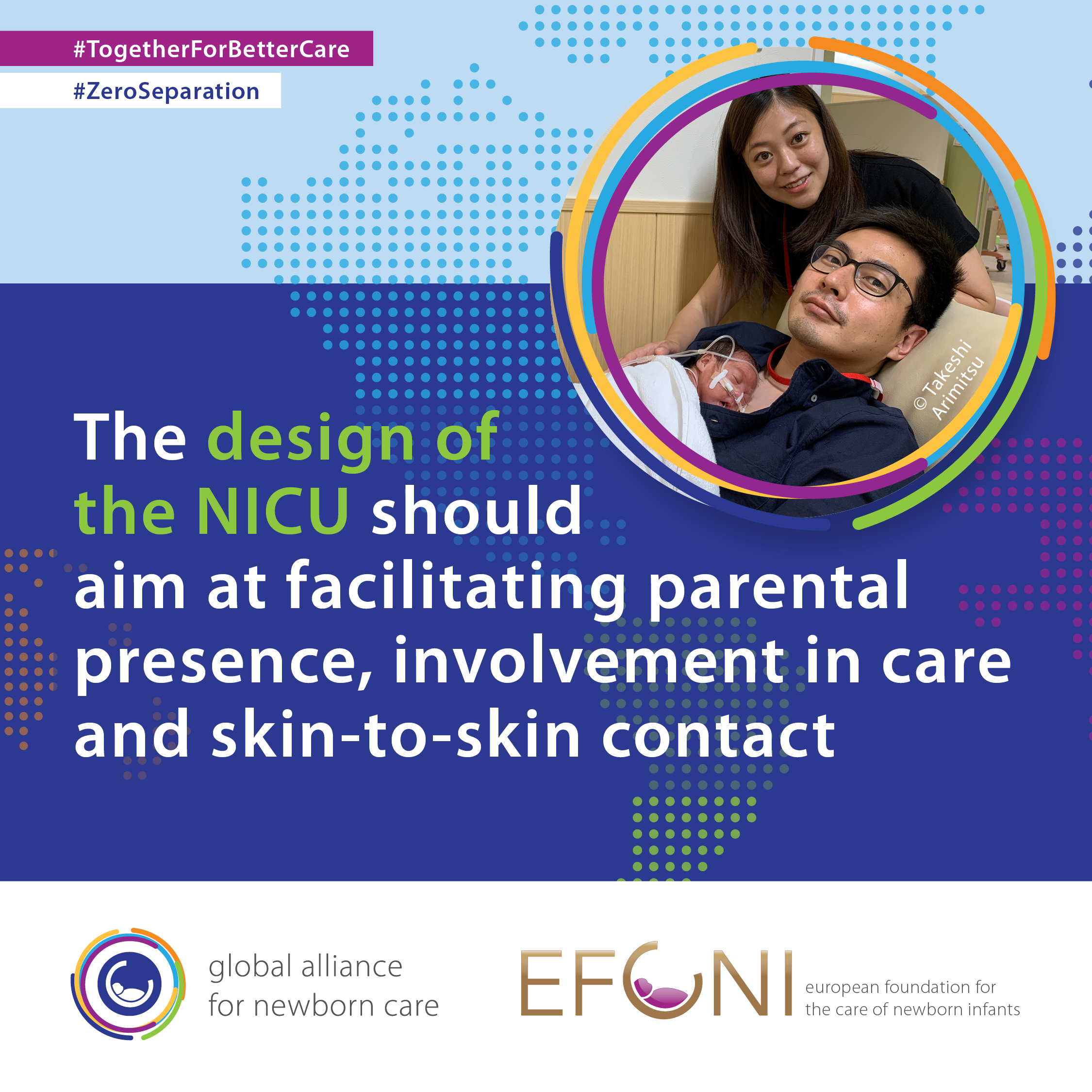
Experiences and quotes
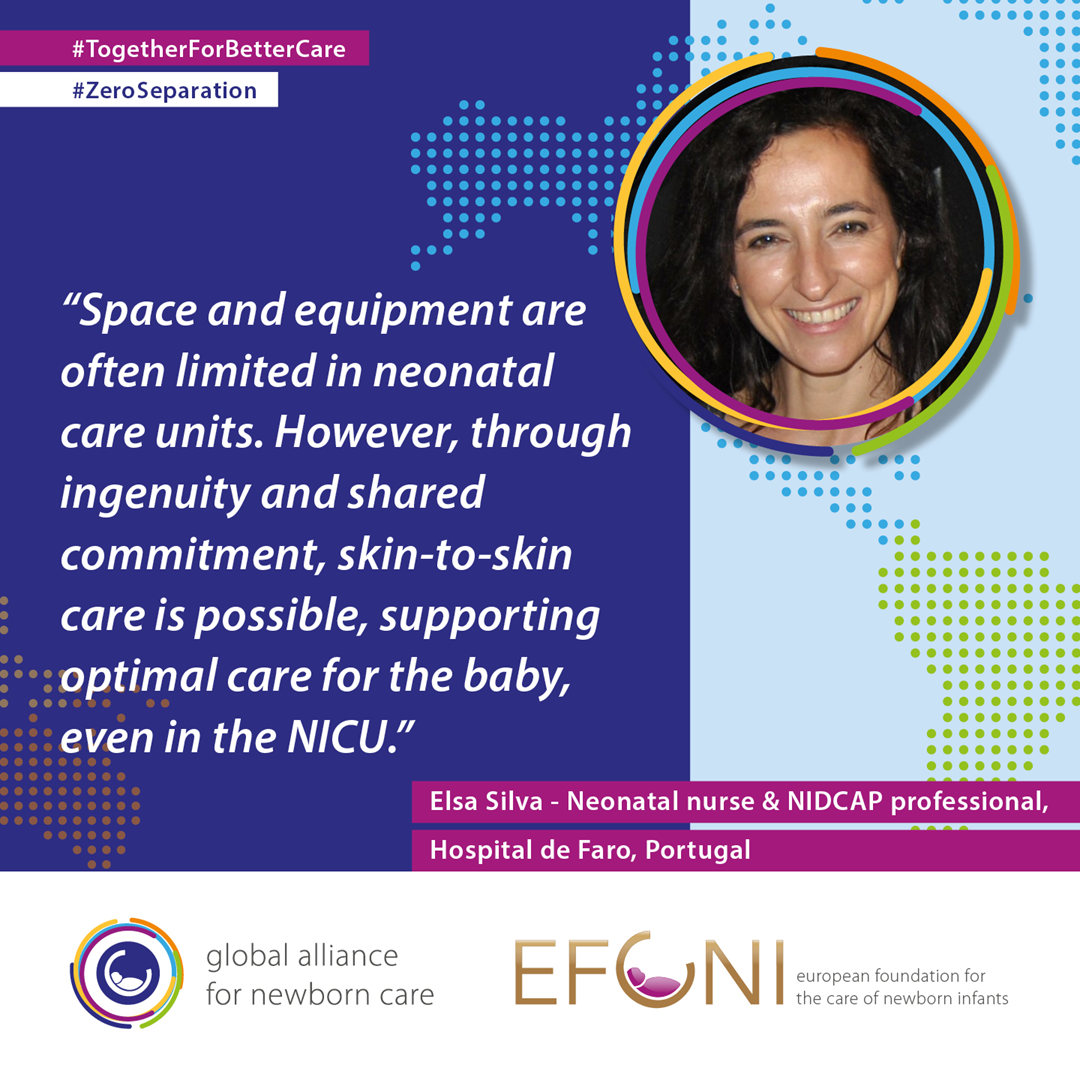
Experience of a neonatal nurse
Elsa Silva is a Neonatal nurse & NIDCAP professional, working at the Hospital de Faro in Portugal. She shares with us her thoughts on separating babies from parents in the neonatal intensive care unit (NICU):
“Babies in neonatal care units have feelings, rights and needs and they must be heard!
When babies are born healthy, they stay with their mothers in the maternity ward and a few days later they join the rest of the family at home. But if a baby is born preterm or sick, and has to go to an intensive care unit or neonatal unit, they are separated from the person and the reality they know best.
An incubator, while necessary, is not the ideal place for a newborn. Instead, a baby is best cared for through skin-to-skin contact, even in the neonatal unit. Every effort must be made to start this care as soon as possible after birth and to continue it for as long as possible, even if space and equipment are limited. Skin-to-skin care can be provided at no extra costs, with a little ingenuity and shared commitment. “
Personal experience of a father
-trigger warning child loss and preterm birth-
“My wife and I went to Mulago National Referral Hospital for an antenatal scan – extremely happy as we were curious to know the sex of our baby. The scan was done, and we were told that we had twins, which made us cry with happiness! But in that moment of happiness, the doctor updated us that one baby had complications and was unlikely to survive. Two weeks later we lost one of the twins. However, we had to keep both twins in the mother’s womb for another month, waiting for the baby to gain weight for another month. The pain of carrying one dead baby and one alive was almost unbearable.
Luckily, we were able to deliver to the other twin girl at 900g. Our hospital had a very high the rate of babies born preterm (3/10), which came with challenges regarding equipment such as NICU beds and CPA machines, which added to everyone’s stress levels. The nurse had to make room for our baby. However, luckily in Uganda, parents are not separated from their babies in the NICU! So, we were able to go and feed our baby every 2 hours, which created a great bond between us and her. After 2 weeks we were introduced to Kangaroo Care, and we were able to do it at least 10 hours a day. Kangaroo Care and Zero Separation was the best experience we had in the hospital!
With limited knowledge of the basics of caring for a preterm baby both in hospital and at home, we were scared and worried about being discharged. In Uganda, about 50% of discharged babies die at home. To be prepared and have the best support we could think of, we started a WhatsApp group for share knowledge about care and later added specialists. When we were discharged from hospital after 2 months, we continued the Kangaroo Care at home, which greatly helped our baby gain weight and sleep better.” -Kateregga Bazilio, father of a surviving twin girl born preterm, Uganda.

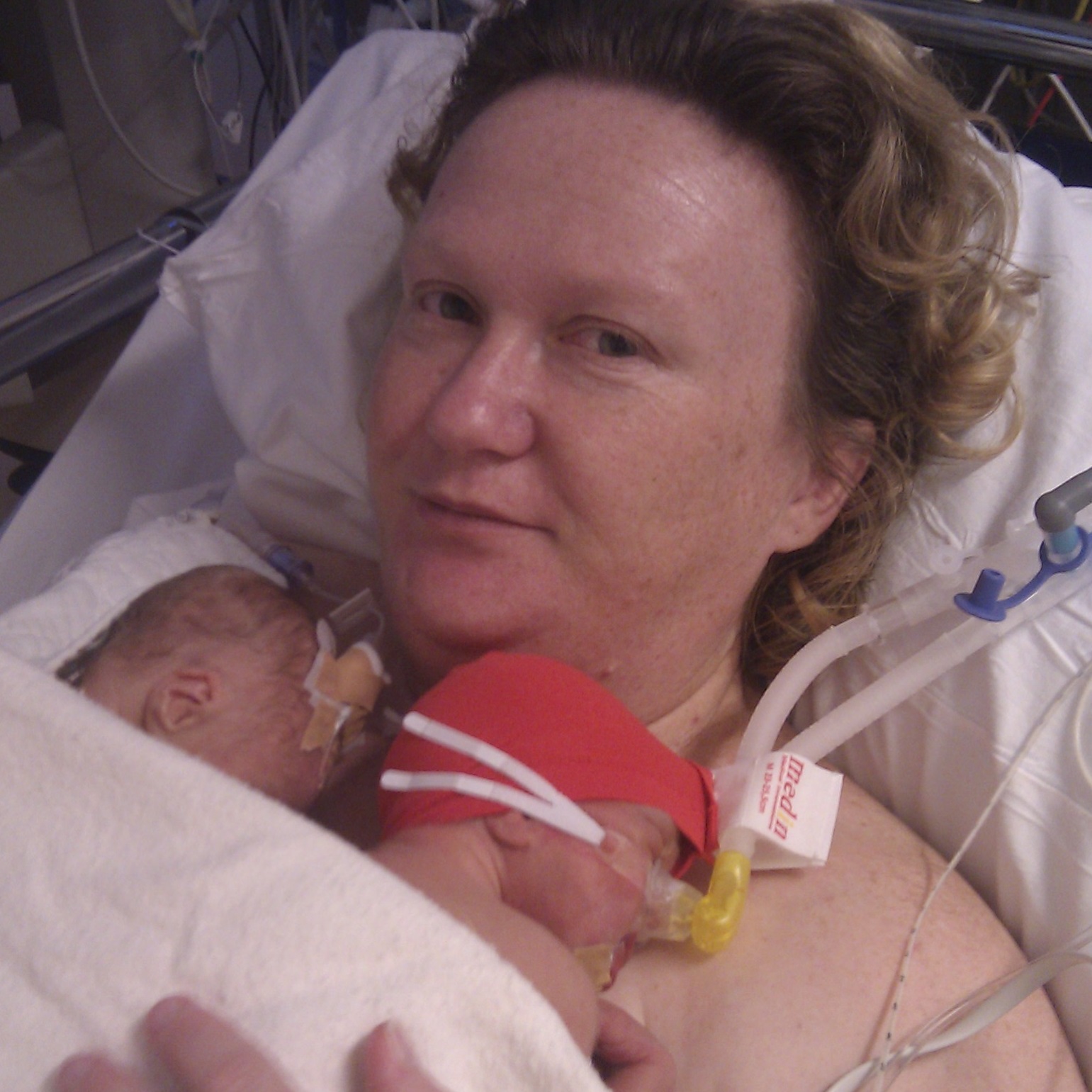
Kangaroo Mother Care – a personal story of a mother
“Precious moments like the one I got to experience should be available to all multiple birth families!”
says Stephanie Ernst, sharing her personal experience with Kangaroo Mother Care.
”My name is Stephanie, and I’m the mother of identical twins born at 31 weeks with Twin Anemia Polycythemia Sequence. At the time, we had been through a stressful pregnancy already, and with the additional stresses of NICU and prematurity thrown at us, it was hard to know how to feel, or even how to connect with my girls.
Kangaroo care was offered to us from the start, and through these precious moments, I could bond with my girls and feel comforted by the fact that this was also benefiting my babies. This photo was taken just hours after they were born, and finally, after months of uncertainty, I could feel calm, knowing that they were ok. We were so incredibly fortunate that both hospitals we were in promoted kangaroo care for our babies, and were experienced in also doing it with multiple births.
It’s essential that healthcare professionals promote and inform parents about KMC with twins. As many parents who have a multiple pregnancy have complications and experience pre-term birth, it’s vital that they also know that it can be done.”
Kangaroo Mother Care – experience of a NICU nurse
“We realized we need to educate and support our staff in why we do kangaroo care and how to do it safely. Now all levels of care in our units get educated on the benefits and on the transfer techniques. Also, we make sure we educate our parents on Kangaroo Care”
Diane K.E. Schultz, NICU nurse in Canada, talks about her experience with Kangaroo Care at St. Boniface Hospital, Winnipeg.

Helping parents cope in the NICU
Being a parent in the neonatal intensive care unit (NICU) is an intense journey. What could be done to help parents cope with the situation?
Most importantly, parents need to have access to the NICU 24/7 so they can be with their baby, enabling infant- and family-centred developmental care.
We think it is also essential to understand that all NICU parents are different, emotions are different, each journey is different. Therefore, finding individual solutions can be helpful. Some parents prefer to receive a lot of information, while others may find it overwhelming. We recommend supporting parents by asking them what would be most helpful for them and what would make them feel most comfortable.
Suggesting ways to create memories, even during this difficult time, could be another way to help. Some parents may like to write a journal, create a blog or read to their baby. Milestone cards celebrating small steps on the difficult journey could be a great way to encourage. But of course, always remember that experiences and coping mechanisms are individual. What helps one parent may not work for another, thus, individual solutions might be needed.
Kangaroo Mother Care in the NICU
Diane Schultz (Neonatal intensive care unit nurse at St. Boniface Hospital, Winnipeg, Manitoba, Canada) shows how to do Kangaroo Care. She explains and shows transfer techniques for the NICU patient. Click on the image on the left to watch the video and learn ‘how to Kangaroo’.
Benefits for hospitals and healthcare systems
Introducing (immediate) Kangaroo Mother Care can lead to reduction in costs and lower capital investment for hospitals and healthcare systems due to e.g., reductions in electricity, maintenance and repair of equipment. This may partly be a result of the shorter NICU and overall hospital stays. The infant also requires less handling by medical staff while receiving KMC, which frees up staff resources³ and facilitates respectful newborn and family-centered developmental care.⁵
Launch of WHO documents on Kangaroo Mother Care
In 2023 the World Health Organization (WHO) launched two new resources: a global position paper ‘Kangaroo mother care – A transformative innovation in health care’ and an implementation strategy ‘Kangaroo mother care – Implementation strategy for scale-up adaptable to different country contexts’. These resources were developed in collaboration with a multi-country, multi-stakeholder working group, including EFCNI. The documents outline key actions with the aim to enable the wider adoption and implementation of Kangaroo Mother Care to support preterm and low birthweight babies benefitting from this lifesaving care practice.
The resources are directed to policy makers, governments, programme partners and the broader public health community to support KMC and can be downloaded here:
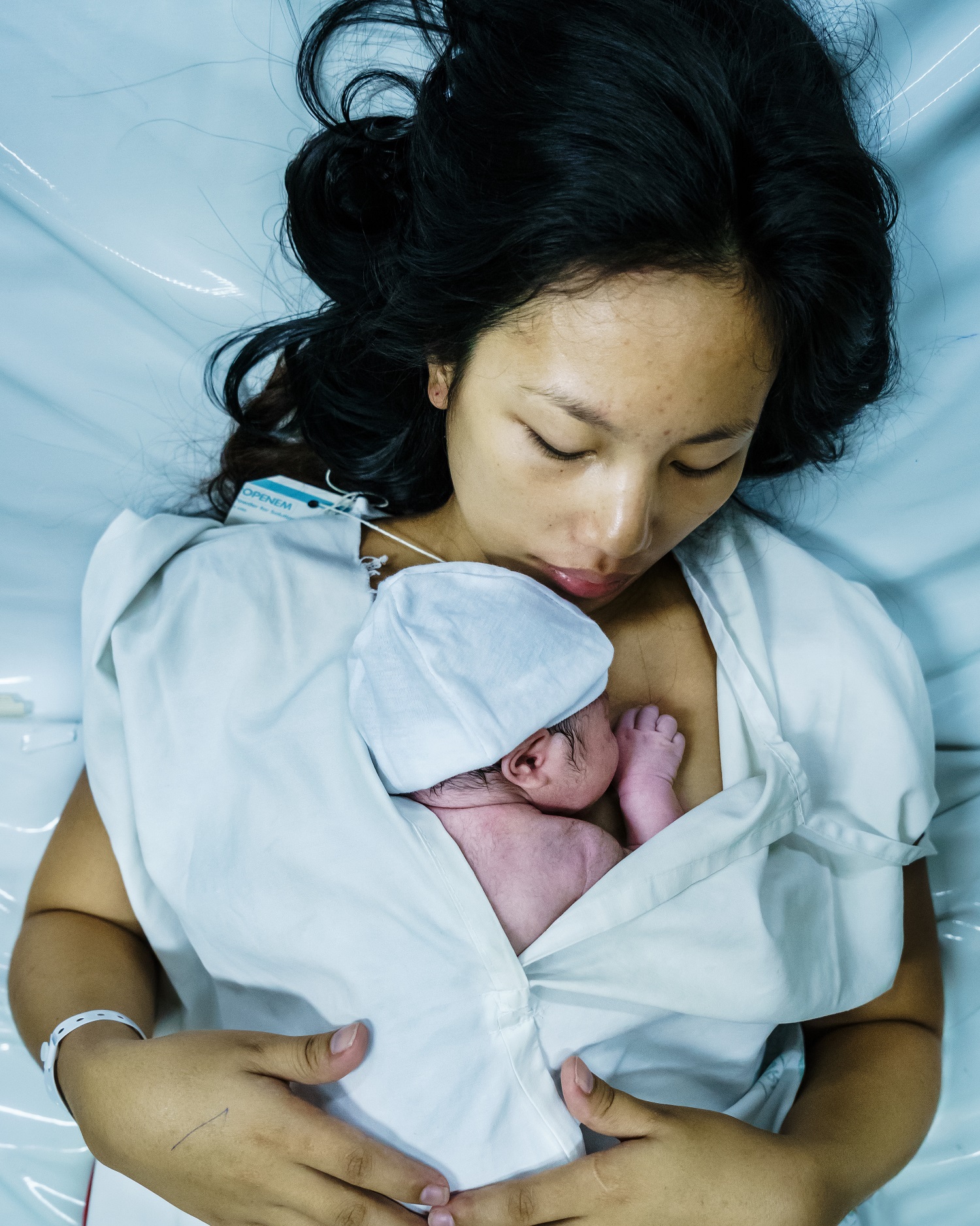
Campaign Material
Get involved – Download our ‘Zero separation. Together for better care!’ campaign resources to engage in this campaign and show your support for newborns and their families. Resources are available in various languages to help you promote family-centred care focusing on KMC. Feel free to use the hashtags #ZeroSeparation #TogetherForBetterCare #KangarooCare #SkinToSkin, so we can find and like your postings.
Further readings
¹World Health Organization. WHO recommendations for care of the preterm or low-birth-weight infant. World Health Organization, 2022, https://apps.who.int/iris/handle/10665/363697.
²Healthy Newborn Network. “Kangaroo Mother Care.” Healthy Newborn Network, https://www.healthynewbornnetwork.org/issue/kangaroo-mother-care/. Accessed 12 Jan. 2023.
³World Health Organization. Kangaroo mother care: a practical guide. World Health Organization, 2003, https://www.who.int/publications/i/item/9241590351.
⁴EFCNI, Bergman NJ, Westrup B, Kuhn P, Daly M, Bertoncelli N, Caballero S, König K. “Very early and continuous skin-to-skin contact.” European Standards of Care for Newborn Health, 2018. https://newborn-health-standards.org/standards/standards-english/infant-family-centred-developmental-care/very-early-and-continuous-skin-to-skin-contact/.
⁵World Health Organization. Kangaroo mother care: Implementation strategy for scale-up adaptable to different country contexts. World Health Organization, 2023, 9789240071636-eng.pdf (who.int).
Thanks to all supporting organisations
We warmly thank the following (parent and patient) organisations for supporting and endorsing this campaign.

This campaign was developed, following the recommendations of the WHO 2022. Last reviewed: September 2023.